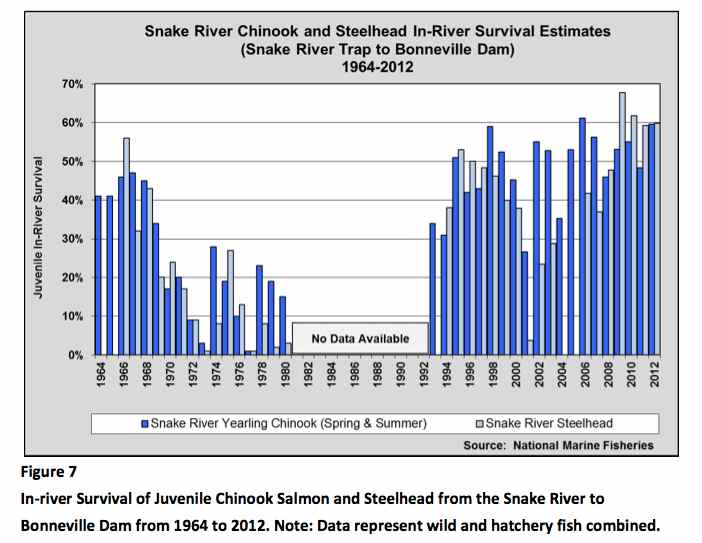forum
library
tutorial
contact

The B-run Bummer Continues:
Steelhead Bag Limits on Table
by Eric Barker
Lewiston Tribune, October 2, 2013
|
the film forum library tutorial contact |

|
The B-run Bummer Continues:
by Eric Barker
|
 The forecast for B-run steelhead was downgraded for the second week in a row, prompting fisheries officials to analyze the prospect of reducing bag limits for the upcoming Clearwater River catch-and-keep season.
The forecast for B-run steelhead was downgraded for the second week in a row, prompting fisheries officials to analyze the prospect of reducing bag limits for the upcoming Clearwater River catch-and-keep season.
Fisheries managers from the federal government and Northwest states and tribes now say only 15,000 B-run steelhead, including 3,700 wild fish, will return at least as far as Bonneville Dam.
As a general rule, about 71 percent of the B-run fish counted at Bonneville Dam make it all the way to Lower Granite Dam. Based on that conversion rate, only 10,650 B-run fish will return to the Clearwater and Salmon rivers. Of those, about 8,000 will be hatchery fish and 2,600 will be wild.
That would put the run a little below the 1999 run when the hatchery return was 8,800. Joe DuPont, fisheries manager for the Idaho Department of Fish and Game at Lewiston, said the department is analyzing harvest rates in past poor-return years to determine if a bag limit reduction is warranted to ensure enough fish return to hatcheries to meet spawning goals.
"We are just starting to look to see if this lower run prediction will influence our harvest season," he said. "Typically what we see when there are fewer fish, fewer are harvested and you don't need to do anything. But on the same note, we want to make sure we meet our brood stock needs."
The catch-and-keep season on the Clearwater River opens Oct. 15. The bag limit is three hatchery fish per day.
DuPont said reducing the bag limit can also spread harvest out and make for better fishing conditions throughout the long season that runs until April 30. Most B-run hatchery fish used for spawning are collected at Dworshak National Fish Hatchery. The hatchery typically needs about
2,000 adult fish to produce the next generation of steelhead.
The Nez Perce Tribe has asked the department to consider making changes to protect spawning.
"Our concern at this point is wanting to make sure we meet brood at Dworshak," said Becky Johnson, production manager for the Nez Perce Tribe's fisheries department.
B-run steelhead are those larger than 31 inches. They generally spend two years in the ocean and the bulk of them return to the Clearwater River basin.
Fisheries managers are predicting about 102,000 A-run fish, which are less than 31-inches, will return to several drainages and make it at least as far as Lower Granite Dam.
This year the wild portion of the run, which is protected by the Endangered Species Act, is predicted to number 46,000 compared to about 64,000 hatchery fish.
"The wild run is getting closer to the same size as the hatchery run,"
DuPont said. "This is probably the closest we have ever been."
That is partly explained by the poor performance of the hatchery run this year. DuPont said many of the juvenile hatchery A-run fish released last year were smaller than normal because of a number of issues, including problems with feed at the hatcheries.
"These smaller fish likely had lower survival than larger fish would have," he said.
A-run fish generally spend just one year in the ocean and return to the Salmon, Grande Ronde, Imnaha and other tributaries to the Snake River.
learn more on topics covered in the film
see the video
read the script
learn the songs
discussion forum
